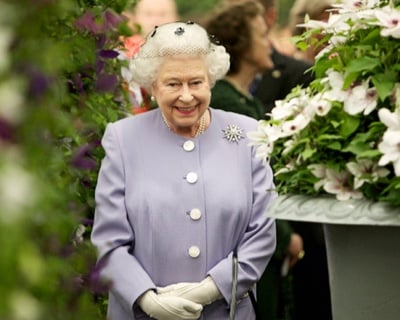How gardening changed during the years of the late Queen Elizabeth II’s reign
From spraying the banned pesticide DDT on Dig for Victory allotments in the 40’s, to the appearance of rewilded gardens at RHS Chelsea 80 years later, gardening changed hugely during our late Queen’s reign
After the war, the Dig for Victory campaign continued until rationing ended almost a decade later – with gardeners relying on pamphlets as well as TV and radio programmes for advice. Gardeners’ Question Time began broadcasting on Sunday afternoons in 1957.
Some parts of gardening were seen as very much a man’s role – such as tending the vegetable patch, mowing lawns and double digging. Recycling and ‘make do and mend’ were established habits that led to a productive but utilitarian garden look.
Scarcity led to ingenuity, and gardening was a communal passion, involving much passing down of tips and advice on the allotment.
However, it wasn’t all about the veg. As wartime restrictions relaxed and incomes rose, flower growing and arranging became increasingly popular. The first garden centre opened at Ferndown in Dorset in 1955.
The era of ‘flower power’ directed us toward plants that were bright, bold and exotic, including ostentatious houseplants such as monsteras.
There was a newfound awareness of the environment, but it was slow to catch on in gardening circles, where
Modern housing estates encouraged us to keep up with the Joneses, with regular lawn mowing and immaculate, well-regimented borders.
The 1976 heatwave has embedded itself into our national psyche, along with the perils of lawn mowing in flares, The Good Life on telly, the revival of gaudy
Few people had a colour television, so for them Gardeners’ World would have been in black and white. Roses were very much technicolour however, and were hugely popular.
Thanks to new propagation techniques, the range of plants available to home gardeners became wider than ever.
The 1980s saw the rise of the garden centre; with a building boom in the UK and home ownership rising, leisure gardening became even more popular despite domestic gardens getting smaller.
Another contradiction was the continued popularity of spraying pests and weeds, while
Double glazed uPVC patio doors led to us seeing the garden differently; striped lawns, crazy paving, heathers, conifers, rhododendrons and gnomes remained popular. Domestic decking arrived in the UK.
The 1990s ushered in an era of gardening transformations on TV with new emphasis on the role of domestic garden design; decking, gravel and architectural plants such as Fatsia japonica along with bolder use of colours – for example Alan Titchmarsh’s famous ‘Barleywood Blue’.
Heathers, conifers and roses were swept away by the rise of the exotic garden, inspired by the likes of the late Will Giles in Norfolk and Christopher Lloyd and Fergus Garrett at Great Dixter in Sussex.
A new millennium and the growth of the internet led to establishment of new online plant retailers. We began sharing our thoughts on social media platforms Facebook and Twitter; writing emails instead of using the phone, and using Google and Yahoo to find gardening solutions.
Climate change and global warming became household words; the gardening world responded by seeking out drought-tolerant plants and sustainable planting ideas.
The New
The New Perennial Movement still held sway, along with the rise of naturalism in garden design at the RHS Chelsea Flower Show, which included recognition of the role weeds play in sustaining pollinators.
Environmental consciousness went up a gear with recycled pots and plastics and the push to ban peat-based composts. Gardeners took a renewed interest in artisanal/cottage gardening and unusual heritage fruit and vegetable varieties.
It was a tricky start to the new decade – an era of climate change awareness and Covid-19. During the pandemic, garden centres eventually became considered an ‘essential service’ and garden visiting increased with restrictions on indoor gatherings, while talks and workshops were forced to go online during lockdown.
New legislation seeks to protect bees and peat bogs; Brexit turns EU Directives into British law…
A massive growth in growing your own during lockdown has dovetailed with increased recognition of the wellbeing benefits of gardening. So while the way we garden may have changed dramatically in the last 70 years, what it can do for us – feed our stomachs and nourish our souls – remains very much the same.



